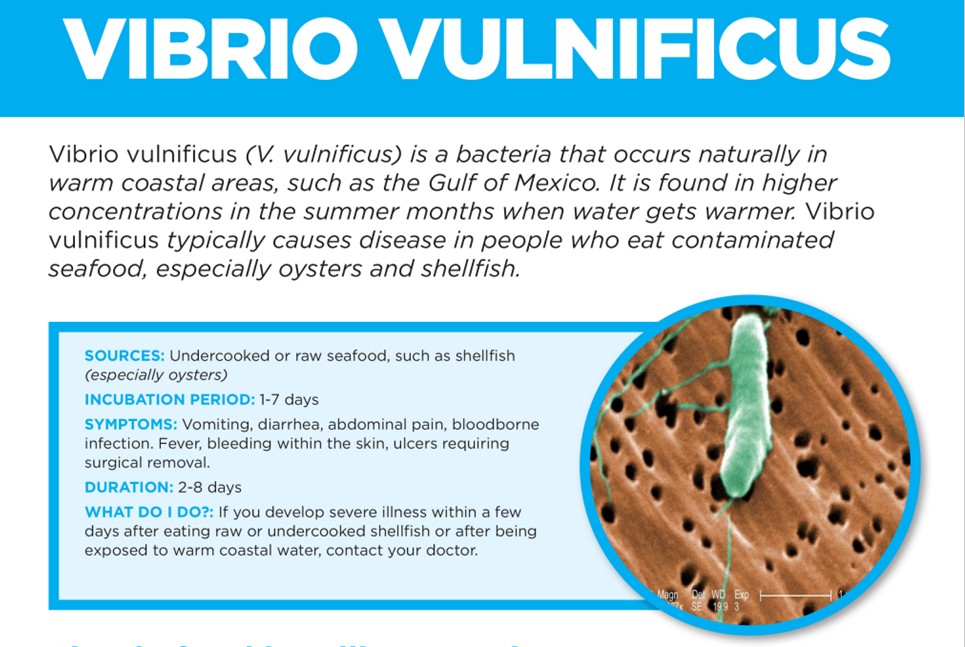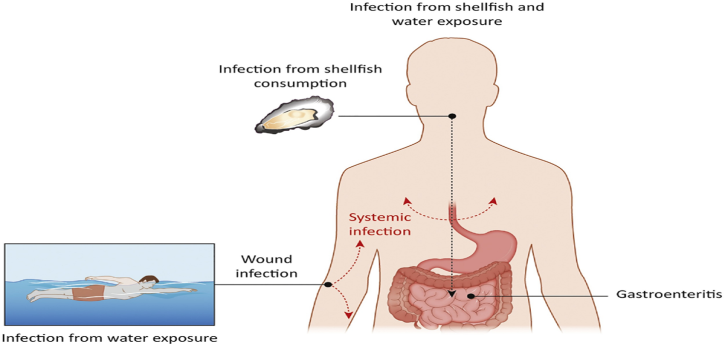Free Courses Sale ends Soon, Get It Now


Free Courses Sale ends Soon, Get It Now



Copyright infringement not intended
Picture Courtesy: saniprofessional.com
Context: Vibrio vulnificus is a marine bacterium that has the potential to become a significant threat to coastal populations in the future. This bacterium is expected to proliferate due to the ideal environmental conditions resulting from warmer oceans and high rainfall.
More details about Vibrio Vulnificus
Origin and Transmission

Picture Courtesy: www.cell.com
Symptoms of Vibrio vulnificus infection can vary depending on the mode of transmission
High-Risk Groups
Cure
Conclusion
|
PRACTICE QUESTION Q. Consider the following statements: Statement 1: Vibrio vulnificus infections are more severe in individuals with comorbidities like chronic liver disease, cancer, chronic kidney disease, and diabetes. Statement 2: Immunocompromised individuals are less susceptible to Vibrio vulnificus infections. Which one of the following is correct in respect of the above statements? A) Both Statement-1 and Statement-2 are correct and Statement-2 is the correct explanation for Statement-1 B) Both Statement-1 and Statement-2 are correct and Statement-2 is not the correct explanation for Statement-1 C) Statement-1 is correct but Statement-2 is incorrect D) Statement-1 is incorrect but Statement-2 is correct Answer: C Explanation: Statement 1 is correct as it correctly states that Vibrio vulnificus infections are more severe in individuals with comorbidities. However, Statement 2 is incorrect, as immunocompromised individuals are more susceptible to Vibrio vulnificus infections, not less. |
© 2024 iasgyan. All right reserved